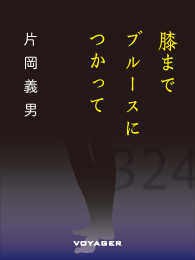Full Description
In recent years there has been an increasing interest in quantitative analysis of coronary cineangiograms and already for a longer time of left ventricular cin- eangiograms. The needfor quantitationofcoronary arterialdimensions has been stimulated by the introduction ofnew therapeutic procedures in the catheteriza- tionlaboratory, suchas the balloon dilatationtechnique (PTCA) and thromboly- tic therapy, by the need to study the vasoactive responses of pharmaceutical agents, and also by the desire to study the progressive nature ofcoronary artery disease with the ultimate goal to find ways to bring a halt to the progression of coronary atherosclerosis or even achieve regression of the disease. Parallel with these clinical developments, rapid technical developments in computerarchitect- ures and semiconductor memories have made it possible to digitize and store cineframesor selected portions thereof in image processors and to analyze these pictorial data quantitatively at affordable prices. More than 15 years of research have been directed by various groups towards the semi- or fully-automated delineation of the left ventricular boundaries on a frame-to-frame basis.
Yet not a single system with fully-automated capability is commercially available. In the mean time many different left ventricular wall motion models have been developed, again with little consensuson which model is to be preferred as no golden standard exists.
Contents
One - Methodology.- I. Left ventricular and Coronary Cineangiography; Overview of Techniques, Applications and Limitations.- II Cineangiocardiography.- III. Cardiovascular Angiography Analysis System (CAAS) 62.- IV. Contouromat - A hard-wired left ventricular angio processing system.- V. Validation quantitation techniques of coronary and left ventricular cineangiograms.- VI. Assessment of dimensions and image quality of coronary contrast catheters from cineangiograms.- VII. Densitometric analysis coronary cineangiograms.- VIII. 3-D reconstruction of coronary arterial segments from two projections.- IX. Structural analysis of the coronary and retinal arterial trees 185.- X. A methodological review of quantification systems for coronary and left ventricular cineangiograms.- XI Quantitative assessment of regional left ventricular function: Endocardial landmark motion.- XII. The cardiovascular database and the coronary reporting system.- Two - Clinical Applications.- XIII. Influence of intracoronary nifedipine on left ventricular function, coronary vasomotility, and myocardial oxygen consumption 275.- XIV. Effect of intracoronary thrombolytic therapy on global and regional left ventricular function. A three years experience with randomization.- XV. Effect of coronary occlusion during percutaneous transluminal angioplasty in man on left ventricular chamber stiffness and regional diastolic pressure-radius relations.- XVI. Is transluminal coronary angioplasty mandatory after successful thrombolysis? A quantitative coronary angiographic study 326.- XVII. Assessment of percutaneous transluminal coronary angioplasty by quantitative coronary angiography: diameter versus densitometric area measurements.- XVIII. Left ventricular performance, regional blood flow, wall motion and lactate metabolism during transluminal angioplasty.- XIX. The role of vascular wall thickening during changes in coronary artery tone.- XX. Responses of normal and obstructed coronary arterial segments to cold stimulation; a quantitative angiographic study.- XXI Quantitative angiography of the left anterior descending coronary artery: correlations with pressure gradient and exercise thallium scintigraphy.- XXII. Quantitative coronary angiography in a lipid intervention study (The Leiden Diet Intervention Trial).- XXIII. Asynchrony in regional filling dynamics as a consequence of uncoordinated segmental contraction during coronary transluminal occlusion.- Index of subjects.








